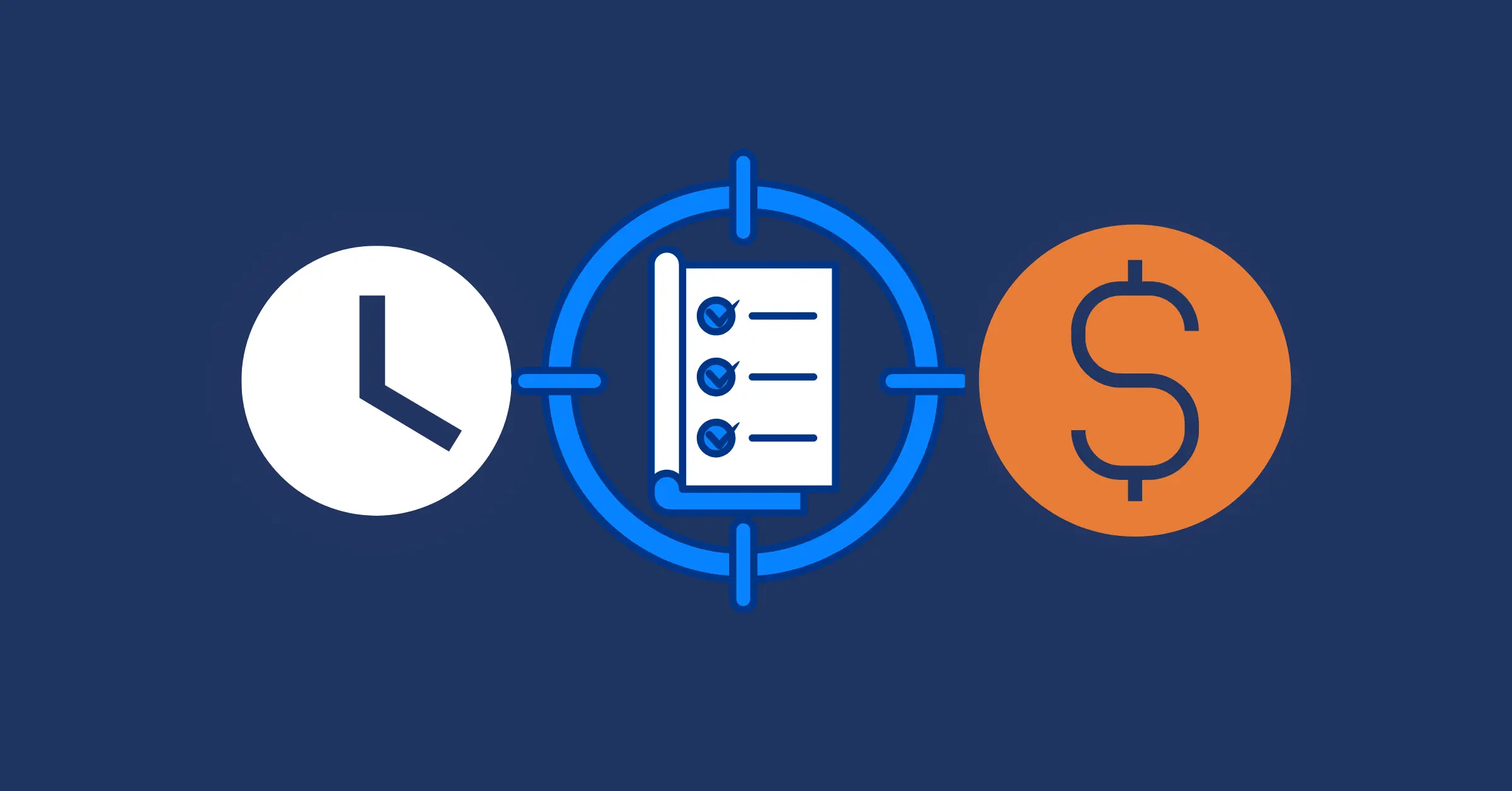How To Convince Project Stakeholders To Stay On Your Side
Discover proven strategies to convince project stakeholders to stay supportive through trust, transparency, aligned goals, and credible project management.
Keeping project stakeholders supportive is one of the most critical aspects of project management. A project can have a strong plan, a skilled team, and sufficient resources, but without stakeholder confidence, progress can stall quickly.
Winning and maintaining stakeholder support is not just about persuasion, it’s about building credibility, communication, and trust over time. This guide explores practical ways to ensure your project stakeholders stay aligned with your vision and committed to your success.
What Are Project Stakeholders?
Project stakeholders are individuals, groups, or organizations that have an interest in the outcome of a project. They can include clients, team members, executives, suppliers, regulatory bodies, and even the public in certain cases. Essentially, anyone who can influence or is affected by the project’s success qualifies as a stakeholder.
Why It’s Important to Keep Project Stakeholders on Your Side
Stakeholders play a critical role in project management because their support, feedback, and engagement can directly affect the project’s progress and success. Here’s why keeping stakeholders on your side is essential:
- Ensures Financial Support and Resource Availability: Stakeholders, especially sponsors and executives, often control budgets and resources. A positive relationship ensures funding is maintained and resources are allocated efficiently, reducing the risk of negative cost variances.
- Facilitates Decision-Making: Engaged stakeholders provide timely feedback and approvals, preventing delays that can lead to cost overruns or schedule slippages.
- Minimizes Scope Creep: When stakeholders are informed and aligned with project goals, it’s easier to manage expectations and resist unnecessary changes and scope creep that could inflate costs or extend timelines.
- Boosts Accountability and Transparency: Regular communication with stakeholders increases accountability within the team and demonstrates responsible cost management. Tools like TaskFord can help share real-time project and cost data, keeping stakeholders confident in your management.
- Enhances Risk Management: Stakeholders can provide insight into potential risks and emerging issues, allowing the project team to proactively address problems before they impact budgets or schedules.
How to Convince Project Stakeholders To Stay On Your Side
1. Build Strong Relationships With Project Stakeholders
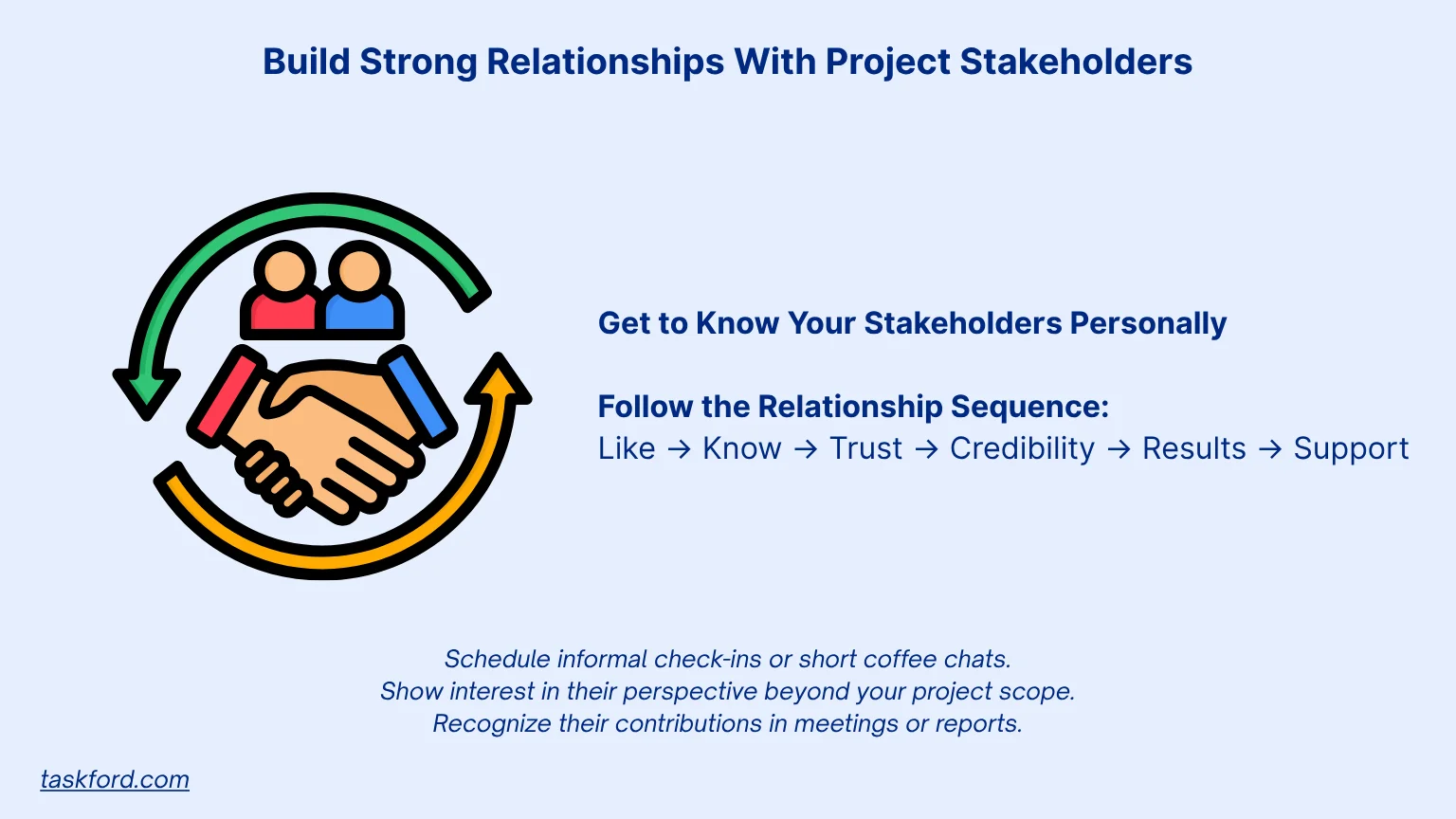
Before requesting approvals, funding, or decisions, invest time in building meaningful relationships. Influence begins with connection. People are far more likely to support someone they like and respect than someone who only reaches out when they need something.
Get to Know Your Stakeholders Personally
Understanding personalities, motivations, and priorities is essential. Learn what drives each stakeholder. For some, it’s organizational impact; for others, it’s customer satisfaction, innovation, or visibility.
Small gestures like remembering details from past conversations or showing genuine interest in their concerns can strengthen rapport significantly.
Follow the Relationship Sequence
Building stakeholder trust follows a clear progression: Like → Know → Trust → Credibility → Results → Support
Stakeholders must first like and know you before they trust your judgment. Credibility comes through consistent results, which then leads to long-term support.
Practical Ideas
- Schedule informal check-ins or short coffee chats.
- Show interest in their perspective beyond your scope.
- Recognize their contributions in meetings or reports.
Strong relationships turn stakeholders into allies who advocate for your project even during challenges.
2. Communicate With Project Stakeholders in Their Preferred Style
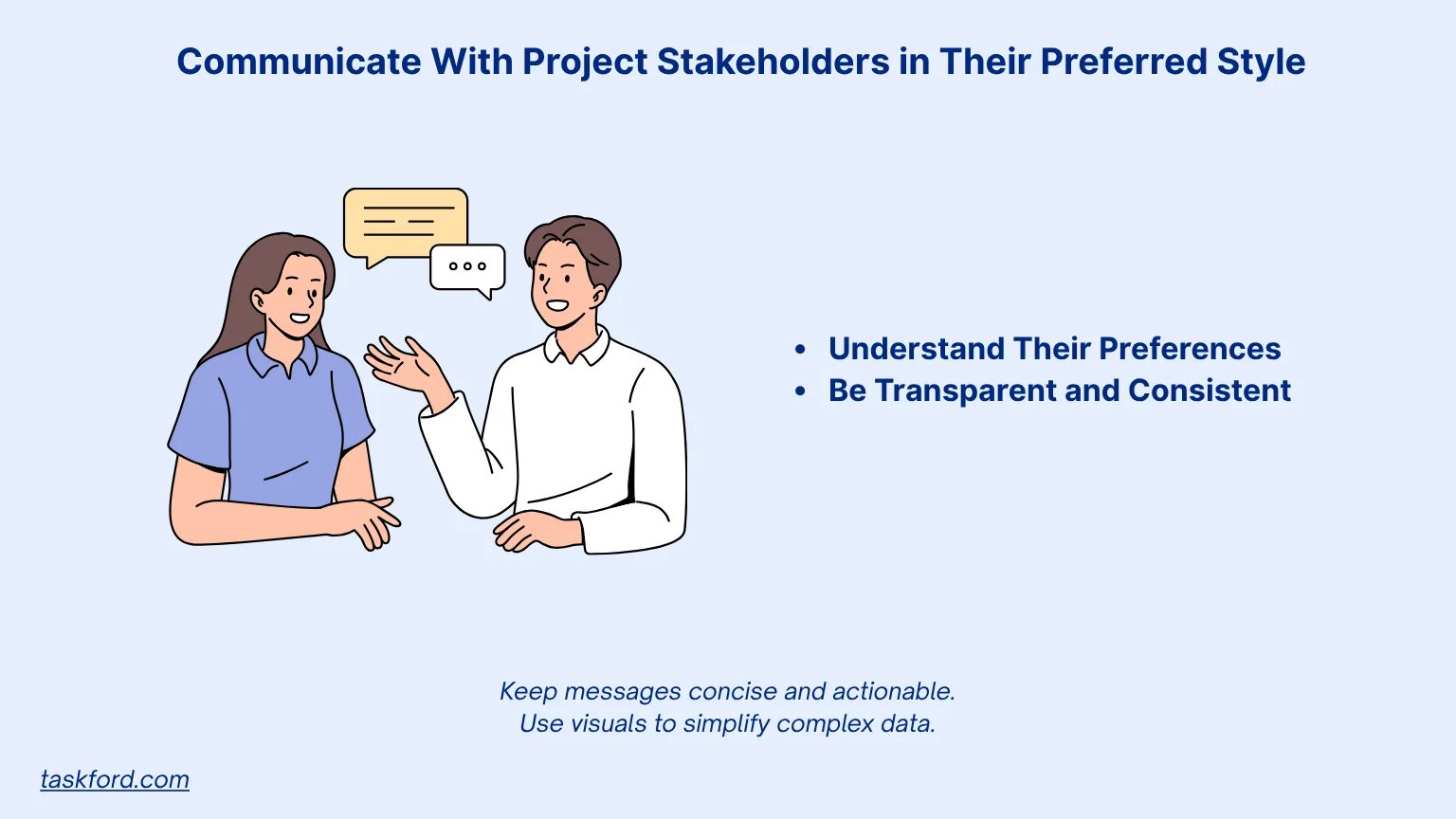
No two project stakeholders communicate the same way. Some prefer detailed reports, while others value brief, conversational updates. Tailoring your communication style is key to engagement and trust.
Understand Preferences
Ask how each stakeholder likes to receive updates. Do they want weekly dashboards, email summaries, or quick verbal check-ins? Adapt to their style, this shows respect for their time and priorities.
Be Transparent and Consistent
Transparency builds trust. Share both successes and challenges. Hiding problems can erode confidence. Regular, predictable updates, even short ones, assure stakeholders that the project is under control.
Tips for Effective Communication
- Segment updates by relevance: executives may want KPIs, while team leads prefer detailed metrics.
- Keep messages concise and actionable.
- Use visuals to simplify complex data.
Effective communication keeps project stakeholders informed, aligned, and confident in your leadership.
3. Align Project Goals With Stakeholder Priorities
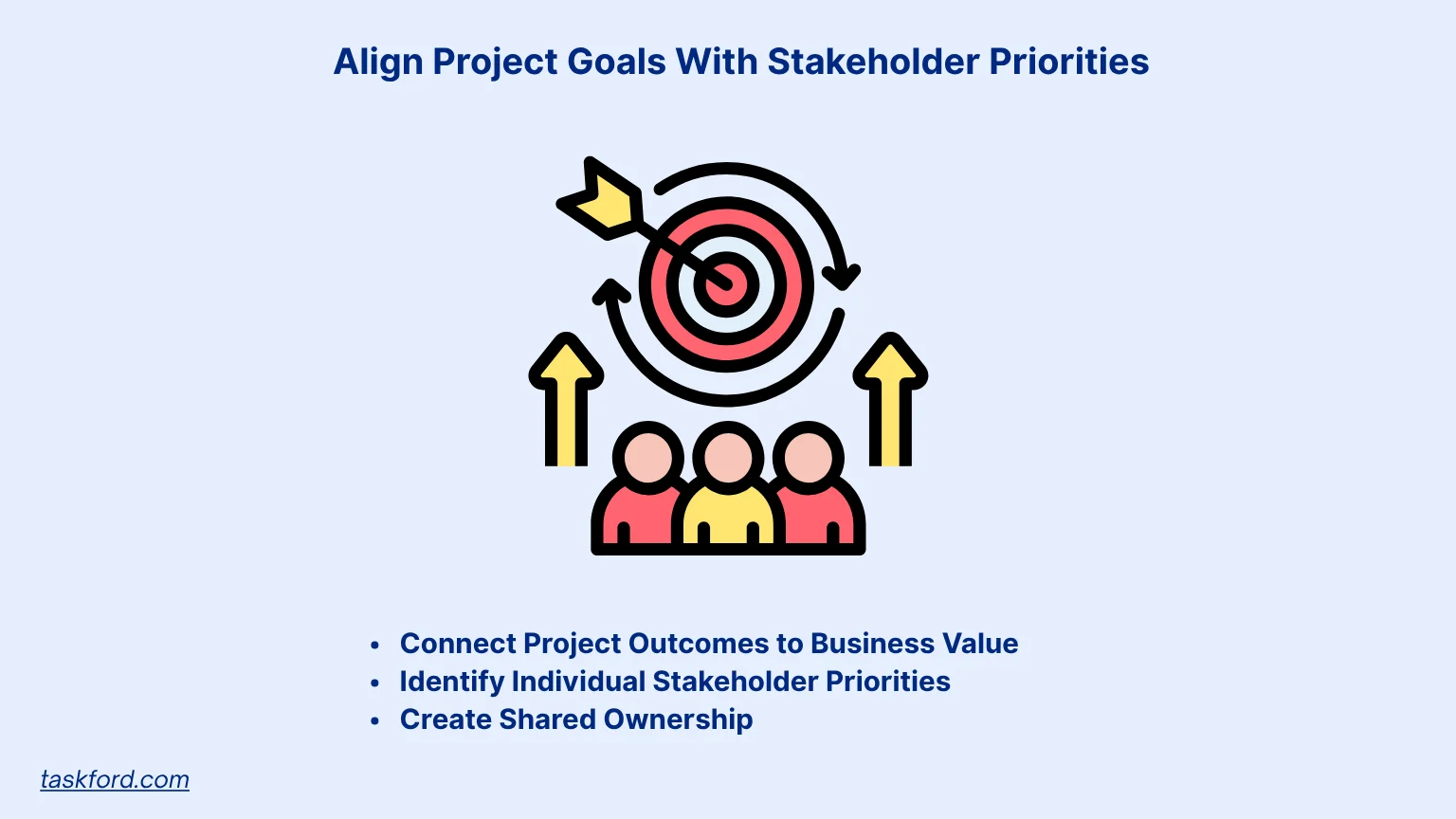
One of the most powerful ways to keep project stakeholders on your side is to tie project goals to their priorities. When stakeholders see their interests reflected in your objectives, they develop a personal investment in the outcome.
Connect Project Outcomes to Business Value
Rather than focusing solely on technical details, explain how the project delivers tangible benefits: reduced costs, faster processes, better customer experience, or increased visibility.
Identify Individual Stakeholder Priorities
Executives, department heads, and functional leads may all value different outcomes. Mapping these priorities helps you frame the project in terms that matter to each group.
Create Shared Ownership
Alignment turns stakeholders from passive observers into active advocates. When their goals are reflected in the project, they support decisions and encourage wider buy-in.
4. Build Credibility With Project Stakeholders Through Results
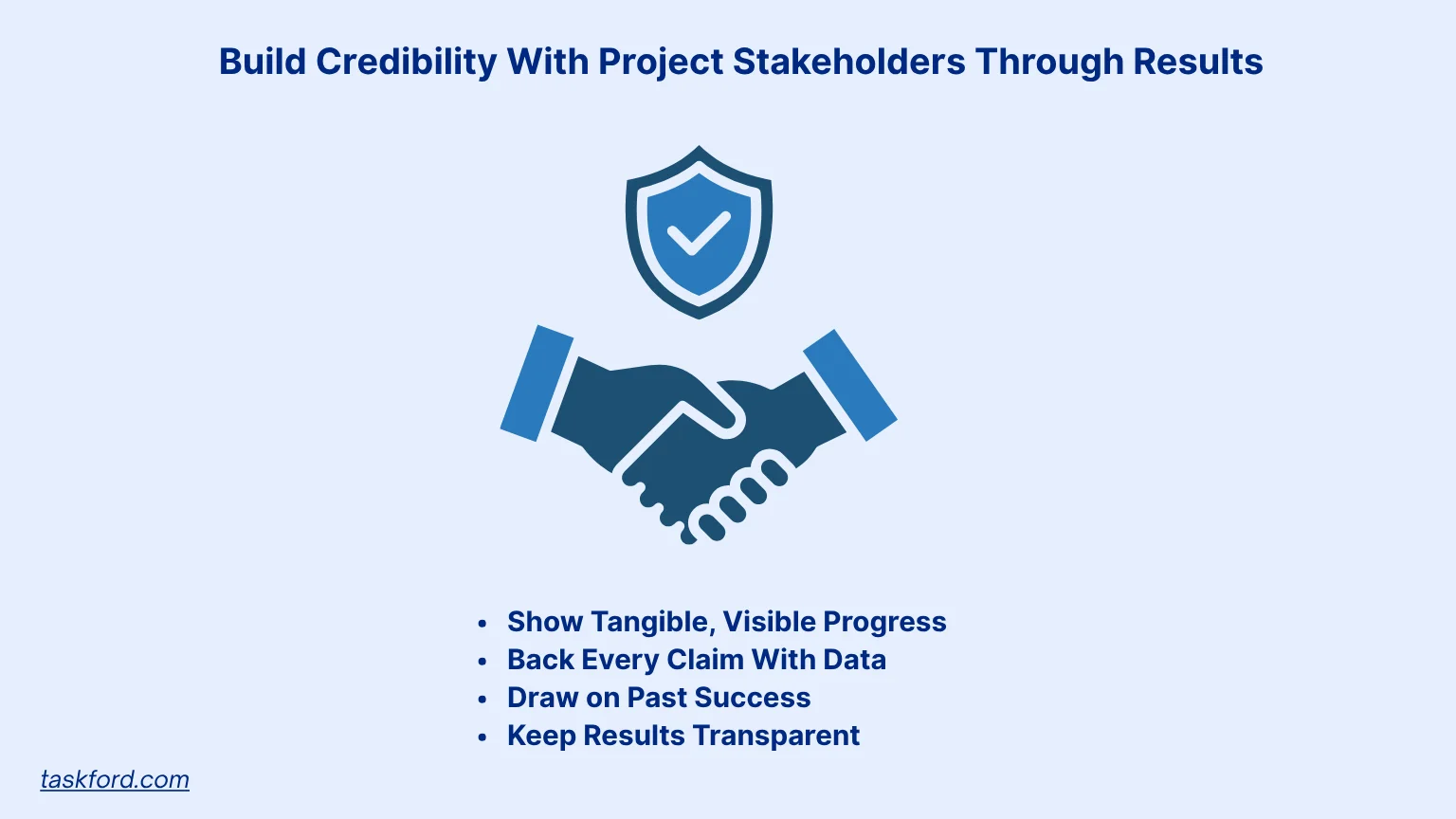
Credibility is the currency of project management. When project stakeholders see that you consistently deliver on what you promise, they are more likely to trust your judgment, support your plans, and back your decisions.
Show Tangible, Visible Progress
Share early deliverables, even if they are small. Completed prototypes, successful tests, or improved performance metrics show that work is moving forward.
These modest wins signal that you deliver results and reinforce your leadership. Short, frequent updates highlighting recent achievements such as mitigated risks or reduced costs to demonstrate control and competence.
Back Every Claim With Data
Numbers reduce ambiguity. Use measurable proof to reinforce updates:
- Performance indicators showing progress toward goals
- Dashboards or charts that make complex information easy to understand
- Comparisons to past performance to illustrate improvement
Data-driven communication builds confidence and credibility. Stakeholders trust what they can verify.
Tips: Use reports from tools like TaskFord to provide clear project performance data to stakeholders to ensure clarity and credibility
Draw on Past Success
Highlight relevant past projects where you delivered results. Share lessons learned and explain how they inform current project decisions.
For example, if you previously managed a system migration ahead of schedule, reference that experience to show your approach to risk management here. This demonstrates learning, adaptability, and reliability.
Keep Results Transparent
Use shared dashboards, real-time progress reports, or visual summaries so stakeholders can independently verify progress. Transparency reinforces credibility over time.
5. Involve Project Stakeholders Early and Often
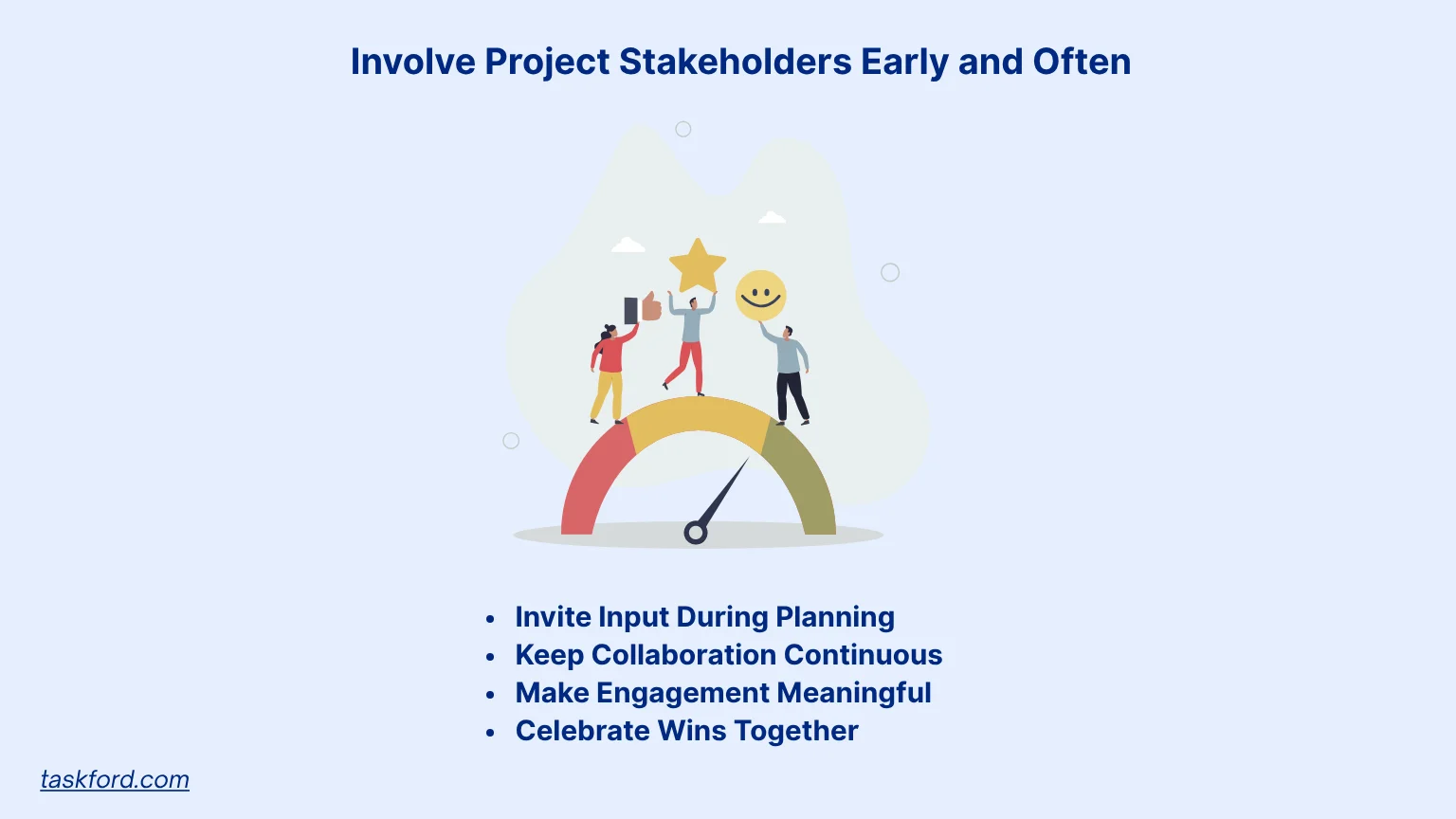
Stakeholder involvement is not a box to check, it’s a partnership to cultivate. The more project stakeholders contribute throughout the process, the stronger their commitment becomes.
Invite Input During Planning
Engage stakeholders before major decisions are finalized. Ask questions such as:
- “What outcomes would make this project a success in your view?”
- “Which risks concern you the most?”
- “Where do you see opportunities for improvement?”
When stakeholders help shape the project plan, they feel ownership. They are investing in shared success rather than simply approving your ideas.
Keep Collaboration Continuous
Maintain dialogue throughout the project. Hold short review sessions at milestones to confirm alignment and gather feedback. For distributed teams, digital collaboration tools help stakeholders stay involved at their own pace.
Regular two-way communication ensures concerns are caught early and that support remains steady.
Make Engagement Meaningful
Avoid token participation. Ensure stakeholder input influences real decisions. For instance, if a stakeholder recommends improving user training, acknowledge it and show how it was implemented.
Celebrate Wins Together
Recognize contributions when milestones are reached. Send thank-you notes, highlight stakeholder support in updates, or mention achievements in executive meetings. This strengthens goodwill and reinforces engagement for the next project phase.
6. Maintain Long-Term Trust With Project Stakeholders
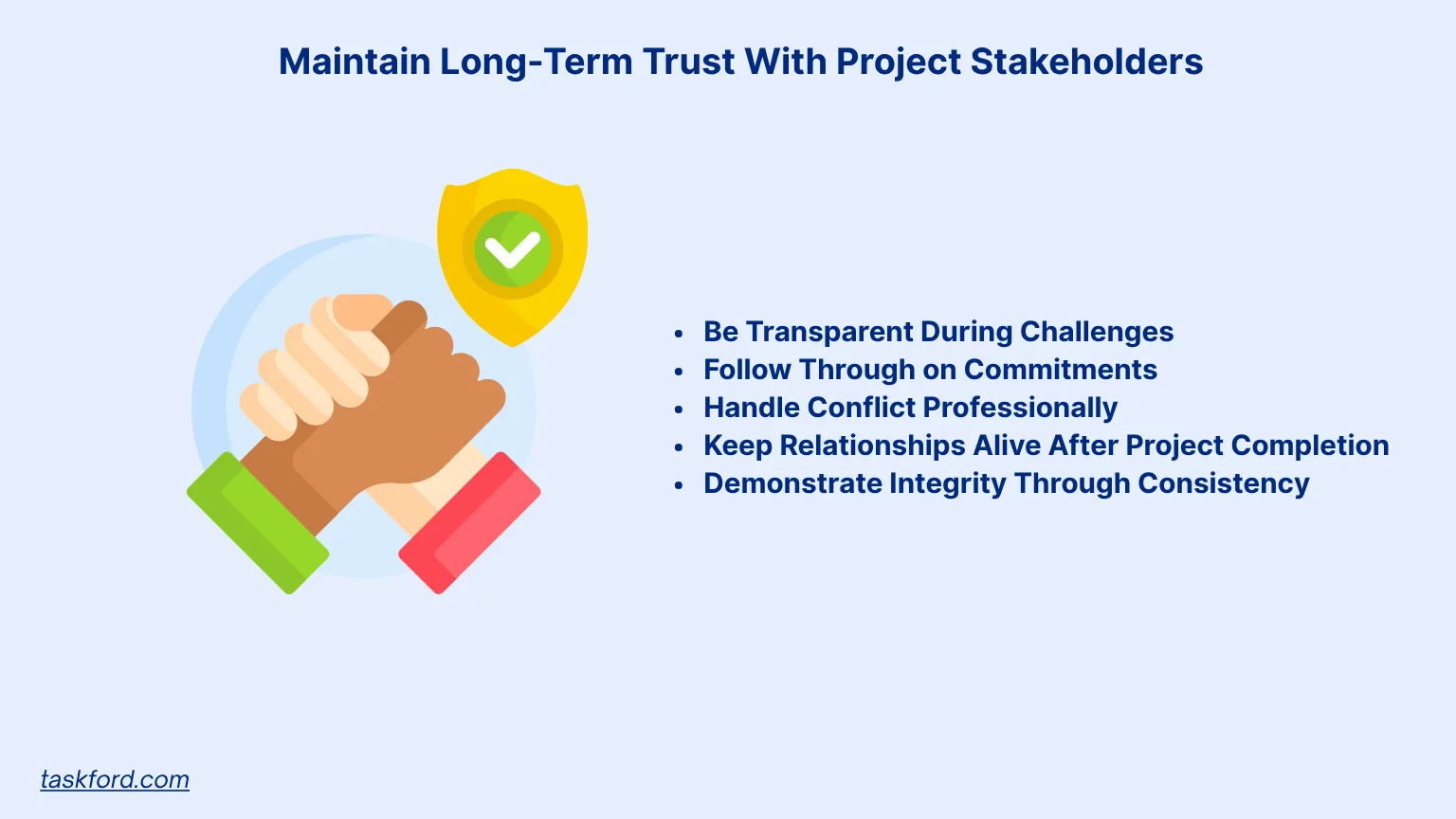
Trust is not earned once; it is maintained through consistent action, honesty, and professionalism. Long-term trust ensures that stakeholders remain supportive even when challenges arise.
Be Transparent During Challenges
No project is perfect. Delays, changing requirements, or unexpected obstacles will happen. Address issues early, explain the situation clearly, and outline corrective actions.
Transparency prevents surprises and demonstrates accountability. Stakeholders value honesty over perfection.
Follow Through on Commitments
Reliability builds trust. Deliver reports, updates, and milestones as promised. Even small actions like sending updates on time, responding to questions promptly, or keeping promises signal competence and predictability.
Handle Conflict Professionally
Conflicts are inevitable. Listen actively, understand the root of concerns, and focus on solutions. Maintain calm and show fairness. Even if compromise is not possible, professional handling of disagreements reinforces credibility and strengthens partnerships.
Keep Relationships Alive After Project Completion
Trust extends beyond the project lifecycle. Follow up with stakeholders, share lessons learned, or acknowledge their contributions. A simple post-project review or check-in shows you value the relationship as a long-term partnership.
Demonstrate Integrity Through Consistency
Consistency between words and actions is the foundation of trust. Transparency, reliability, and respect in daily project management demonstrate that stakeholders can depend on you. When this becomes clear, stakeholders don’t need convincing, they naturally stay on your side.
Conclusion
Convincing project stakeholders to stay on your side isn’t about delivering one persuasive presentation, it’s about demonstrating credibility, consistency, and care throughout the entire project lifecycle. Every interaction, update, and decision either strengthens or weakens their confidence in you. When stakeholders feel informed, respected, and included, they see you as a partner who can be trusted to represent both their interests and the project’s long-term value.
Ultimately, stakeholder support grows from behavior, not persuasion. Strong relationships, transparent communication, visible results, and dependable follow-through are what turn stakeholders into lasting allies. When you manage those elements well, you don’t need to fight for their trust, you’ve already earned it.
Learn more
- What Is Project Management? A Beginner’s Comprehensive Guide 2026
- What Does A Project Manager Do? A Guide to Advancing Your Career
- 10 Best Project Management Tools for Remote Teams - Expert Reviews 2026
Making work simpler,
smarter, and more connected
Join our waitlist and be notified first.

Subscribe for Expert Tips
Unlock expert insights and stay ahead with TaskFord. Sign up now to receive valuable tips, strategies, and updates directly in your inbox.






